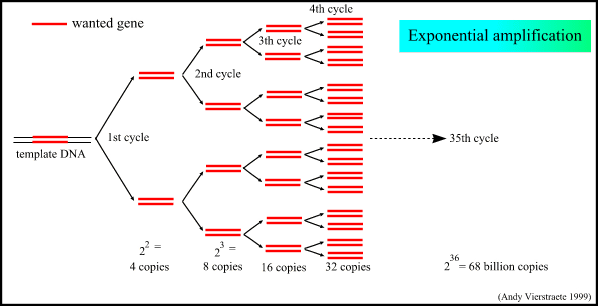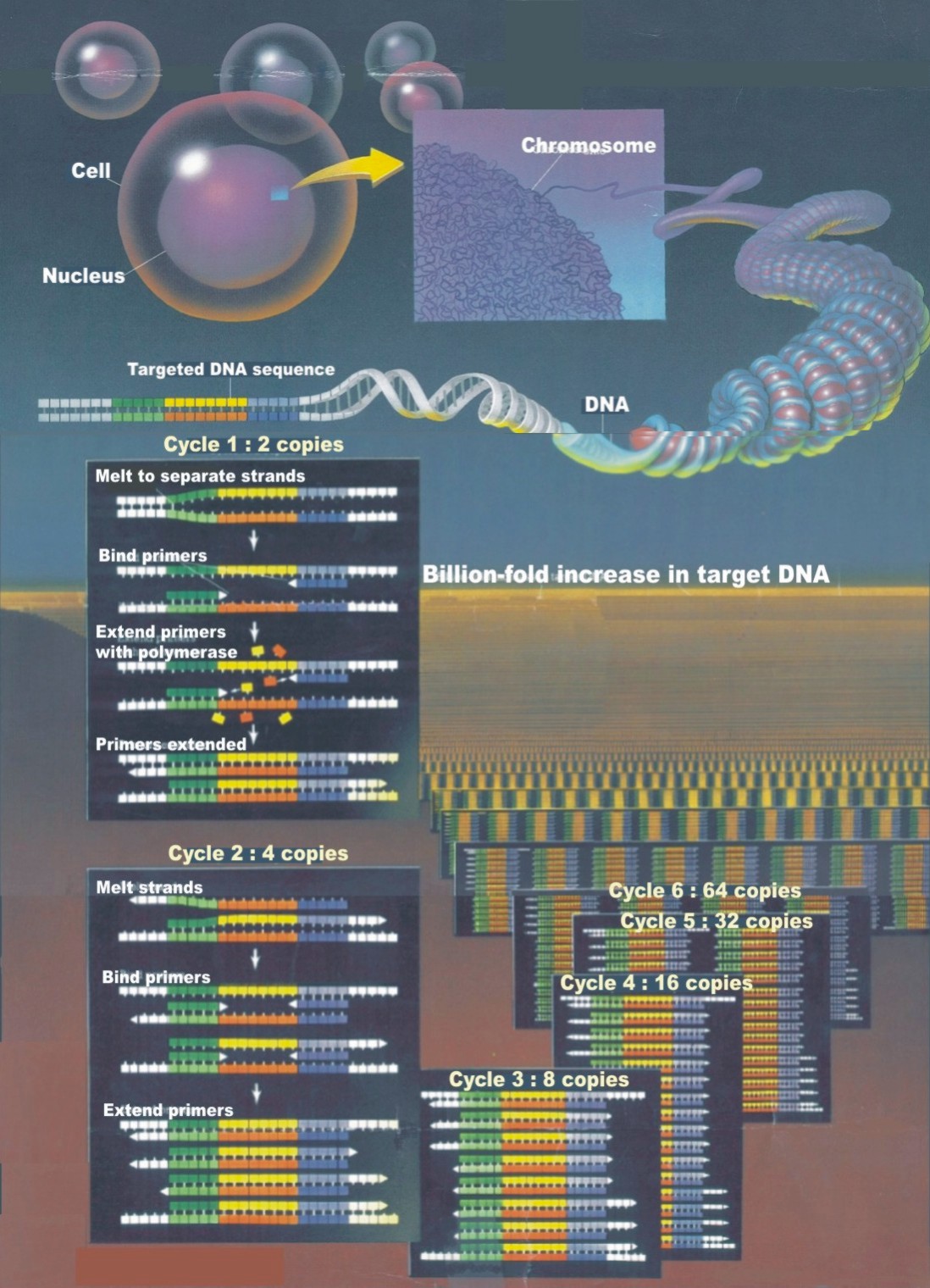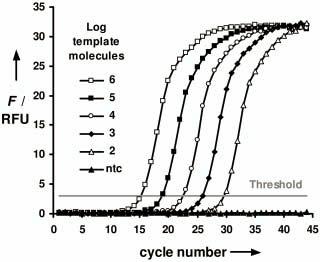The purpose of a Polymerase Chain Reaction (PCR) is to make a huge number of copies of a piece of DNA or a gene. This is necessary to have enough starting template for further analysis, e.g. sequencing. RT-PCR (reverse transcription-polymerase chain reaction) is the most sensitive technique for mRNA detection and quantitation currently available. Compared to the two other commonly used techniques for quantifying mRNA levels, Northern blot analysis and RNase protection assay, RT-PCR can be used to quantify mRNA levels from much smaller samples. In fact, this technique is sensitive enough to enable quantitation of RNA from a single cell. Nanogram levels of template DNA (even from a single cell) is enough to obtain amplification. The more recent 'real-time PCR' techniques are able to detect the sequence of interest in 20 picogram of total RNA.



Click here for a movie on PCR.
Click here for an animation on Real-time (quantitative - q) PCR.
For PCR animation links: http://www.dna.utah.edu/PCR_Animation_Links.htm
See also "PCR" under Techniques used in Molecular Biology.
Real-time PCR is used for many different purposes, particularly for quantifying nucleic acids and for genotyping. Since its invention in 1996, the number of publications dealing with real-time PCR has increased nearly exponentially. The peculiarity of real-time PCR is that the process of amplification is monitored in real time by using fluorescence techniques. The information obtained, that is the amplification curves (see figure), can be used to quantify the initial amounts of template molecules with high precision over a wide range of concentrations. The major advantages of real-rime PCR compared with other methods for the quantification of nucleic acids are the extremely wide dynamic range (more than eight orders of magnitude) and the significantly higher reliability of the results compared with conventional PCR, because with real-time PCR the whole amplification profile is known. Quantitative real-time PCR is therefore more precise than end-point determinations (other forms of RT-PCR that detect the amount of final amplified product at the end-point).

Amplification curves of a dilution series containing 100-1 000 000 template copies. During the first cycles, no signal increase is detectable. The observable exponential phases are shifted to higher cycle numbers for samples containing fewer target molecules; ntc: no template control.